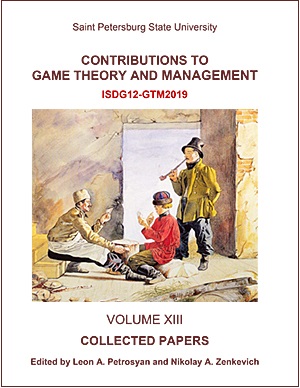Supply Chain Finance Solutions in Joint Working Capital Management
DOI:
https://doi.org/10.21638/11701/spbu31.2020.14Abstract
The research is devoted to joint working capital management in supply chains aiming to improve joint working capital management methods through minimization of financial supply chain costs on working capital using Supply Chain Finance (SCF) Solutions. Though SCF applicability in Financial Supply Chain management has recently been studied to relieve access to capital sources, managerial perspective of SCF solutions is still uninvestigated as well as few other areas. The research suggests a managerial algorithm that contains four developed models: the model of Collaborative cash conversion cycle two models of SCF solutions and the model of Joint Working Capital optimization. The models imply using such SCF solutions as Factoring, Reverse Factoring and Inventory Financing to improve Joint Working Capital in terms of costs on it and liquidity of both supply chain members and entire chain, providing the optimal conditions of SCF solutions. Quantitative optimization with SCF solutions demonstrates on the cases of supply chains the improvement of financial position and liquidity of all chain members. The research has a potential to de applied in businesses since the algorithm represents a comprehensive managerial tool for Joint Working capital management in supply chains. It might be used to achieve optimal cash conversion cycle values for minimal supply chain costs on working capital constrained by liquidity and profitability target levels.
Keywords:
Collaborative Cash Conversion Cycle, Supply Chain Finance, Working Capital Management, Supply Chain Finance Solutions, Reverse Factoring, Inventory Financing
Downloads
References
Downloads
Published
How to Cite
Issue
Section
License
Articles of "Contributions to Game Theory and Management" are open access distributed under the terms of the License Agreement with Saint Petersburg State University, which permits to the authors unrestricted distribution and self-archiving free of charge.




